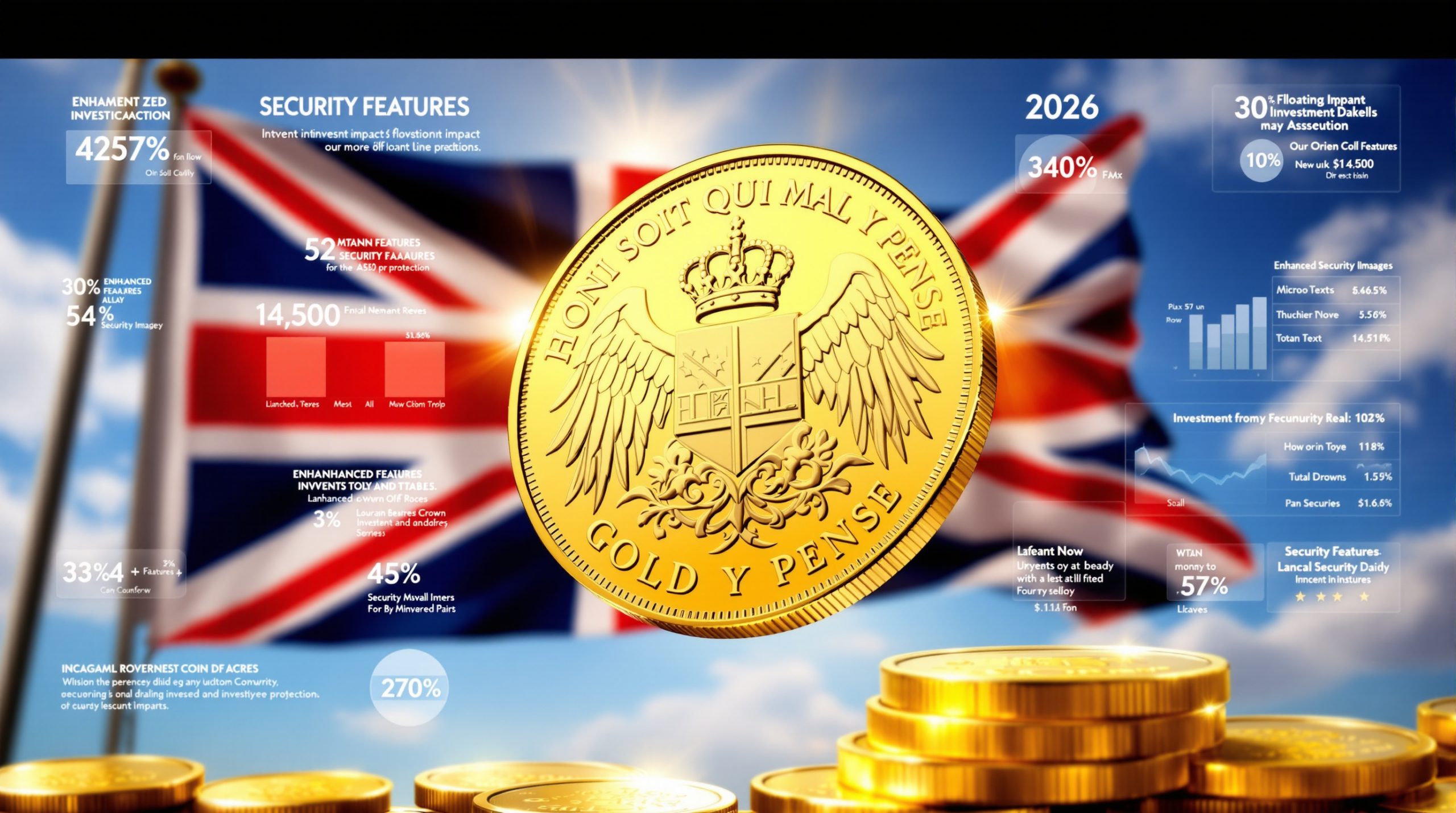The Central Bank Silver Revolution: Why Three Nations Are Leading a Monetary Transformation
The precious metals landscape is experiencing a seismic shift as central banks across multiple continents abandon decades of tradition to accumulate silver reserves. This strategic pivot extends far beyond simple portfolio diversification, representing a fundamental transformation in how monetary authorities view precious metals amid unprecedented global economic uncertainty.
Recent developments show central banks buying silver for the first time since the 1970s, with three major economies leading this unprecedented charge. The implications reach beyond traditional monetary policy, potentially reshaping international reserve systems and silver market squeeze dynamics for decades to come.
The Strategic Appeal of Silver for Central Banking
Unlike conventional reserve assets, silver presents unique advantages that have captured the attention of monetary policymakers worldwide. The metal offers exceptional leverage characteristics compared to gold, delivering substantially higher volatility that can produce outsized returns during periods of monetary instability.
Silver's distinctive dual nature as both an industrial commodity and monetary metal creates multiple demand drivers that central banks buying silver can exploit strategically. This combination provides price support through industrial consumption while maintaining monetary characteristics that gold possesses. Furthermore, understanding central bank silver dynamics becomes crucial for predicting future market movements.
Key factors driving institutional silver interest include:
- Significantly lower acquisition costs compared to equivalent gold positions
- Enhanced volatility offering greater upside potential during crisis periods
- Industrial demand creating a fundamental price floor
- Strategic importance in currency diversification initiatives
The current supply-demand imbalance intensifies silver's appeal. Global production consistently falls short of total consumption, with annual deficits reaching over 200 million ounces in recent years. When sovereign institutions enter markets already struggling with structural shortages, the impact becomes magnified exponentially.
Russia: Pioneering Sovereign Silver Accumulation
The Russian Federation established itself as the first nation to formally announce silver purchases for state reserves, implementing a comprehensive precious metals acquisition strategy. The program allocates substantial resources across multiple precious metals, with silver representing a significant component of this broader initiative.
Russian domestic silver production capacity provides strategic advantages for this accumulation program. The nation produces approximately 38.5 million ounces annually, creating vertical integration opportunities between production and reserve building. Central banks have been turning to silver as a strategic move to diversify their reserve portfolios amid economic uncertainty.
Strategic implications of Russia's silver program:
- Leverages existing domestic production infrastructure
- Supports broader monetary sovereignty objectives
- Creates potential for substantial returns if historical gold-silver ratios normalise
- Establishes precedent encouraging other nations to follow similar strategies
The timing coincides with Russia's broader economic strategy focused on reducing dollar dependency. Silver accumulation provides an alternative store of value while potentially delivering superior returns compared to traditional reserve assets during periods of currency devaluation.
Supply Chain Security and Strategic Independence
Russia's approach emphasises securing critical supply chains while building monetary reserves. The integration of domestic production with state accumulation creates a closed-loop system reducing external dependencies. This model may inspire other resource-rich nations to adopt similar strategies.
The programme extends beyond immediate monetary benefits, positioning Russia advantageously should silver's monetary role expand internationally. Historical precedent suggests precious metals often return to monetary prominence during periods of fiat currency instability.
Saudi Arabia: ETF-Based Silver Positioning
The Saudi Central Bank adopted a different approach through financial market instruments rather than physical accumulation. The institution acquired significant positions in silver exchange-traded funds, demonstrating institutional recognition of silver's monetary potential through existing financial infrastructure.
The Saudi position in the iShares Silver Trust (SLV) represents approximately $30.6 million in silver exposure through 932,000 shares. While this approach involves counterparty risk compared to physical holdings, it demonstrates institutional appetite for silver exposure through established investment vehicles.
Advantages of the ETF approach include:
- Immediate market access without storage infrastructure requirements
- Liquidity advantages for position adjustments
- Integration with existing investment management systems
- Reduced operational complexity compared to physical storage
The significance extends beyond the mechanism of acquisition to the strategic decision itself. Saudi Arabia's move signals institutional recognition that silver possesses characteristics worthy of central bank attention, regardless of the investment vehicle employed.
Monetary Diversification Strategy
Saudi Arabia's silver positioning aligns with broader efforts to diversify away from dollar-denominated assets. The kingdom has systematically reduced Treasury holdings while increasing positions in alternative assets, including precious metals and strategic commodities.
This approach reflects sophisticated understanding of monetary dynamics and portfolio theory applied at the sovereign level. The inclusion of silver alongside traditional reserve assets suggests evolving perspectives on what constitutes appropriate central bank holdings.
India: Institutional Silver Integration
India's Reserve Bank implemented the most structurally significant silver policy change by making the metal eligible as loan collateral alongside gold. The central bank established a 10:1 ratio for silver relative to gold, despite current market ratios exceeding 80:1.
This policy shift represents formal institutional recognition of silver's monetary characteristics within the Indian banking system. Banks can now accept silver as collateral for lending operations, creating direct integration between silver holdings and the credit system. Moreover, this development significantly influences gold-silver ratio analysis across global markets.
Implications of India's collateral policy:
| Policy Element | Impact | Significance |
|---|---|---|
| 10:1 Silver-Gold Ratio | High | Suggests significant silver appreciation expectations |
| Collateral Eligibility | Medium | Integrates silver into banking system |
| Market Ratio Disparity | Very High | Current 80:1 ratio suggests massive undervaluation |
| Credit System Integration | High | Creates direct monetary utility for silver |
The dramatic difference between the Reserve Bank's 10:1 ratio and current market ratios of 80:1 suggests Indian monetary authorities anticipate substantial silver appreciation relative to gold. This represents one of the most bullish institutional signals for silver's future price trajectory.
Banking System Integration
The collateral policy creates practical monetary utility for silver within India's financial system. This integration extends silver's role beyond investment asset to functional component of credit operations, establishing precedent for other central banks to follow.
The policy effectively creates arbitrage opportunities for institutions able to acquire silver at market ratios while utilising it as collateral at the more favourable 10:1 ratio. This mechanism could drive substantial institutional demand within India's financial system.
Market Impact Analysis: Supply Disruption and Price Discovery
The entry of sovereign institutions into silver markets creates profound implications for price discovery mechanisms and supply-demand dynamics. Central banks possess virtually unlimited purchasing power and typically maintain asset holdings for decades, permanently removing significant quantities from circulation.
Critical market impact factors:
- Supply Reduction: Immediate and permanent removal from available inventory
- Price Volatility: Extreme fluctuations as markets adjust to new demand sources
- Investment Demand: Accelerating retail and institutional interest following central bank moves
- Industrial Competition: Intensifying competition between monetary and industrial users
Historical analysis of central bank precious metals programmes demonstrates their ability to fundamentally alter market structures. The gold accumulation programmes of the 2000s created persistent price floors and multi-year bull markets, providing precedent for potential silver market evolution.
Global Inventory Dynamics
Exchange inventories worldwide show concerning depletion patterns as physical demand outpaces supply. The Shanghai Futures Exchange silver inventories have contracted significantly over recent years, indicating strong physical offtake from institutional storage facilities.
This pattern extends globally, with major exchanges reporting consistent inventory declines as investors and institutions prioritise physical possession over paper contracts. Central banks buying silver trends in 2025 show growing scepticism toward paper silver instruments and preference for direct ownership.
Key supply-demand metrics:
- Annual mine production: Approximately 800 million ounces globally
- Industrial consumption: Roughly 600 million ounces annually
- Investment demand: Approximately 250 million ounces per year
- Central bank purchases: Growing rapidly from zero baseline
Price Projection Models and Historical Analysis
Industry analysts have dramatically revised silver price forecasts as central bank participation becomes apparent. Multiple valuation methodologies suggest potential price targets ranging from conservative $200 per ounce to aggressive projections exceeding $600 per ounce.
Analytical price target framework:
- Conservative scenario: $200 per ounce based on supply-demand fundamentals
- Moderate projection: $400-500 per ounce incorporating monetary demand acceleration
- Aggressive estimate: $600+ per ounce assuming widespread central bank adoption
- Extreme case: $1,000+ per ounce during potential monetary system transitions
Historical Precedent Analysis
Examining silver's performance during previous monetary crises provides insight into potential price trajectories. The 1970s silver bull market, adjusted for currency debasement and economic expansion, suggests contemporary targets around $661 per ounce using pattern recognition analysis.
Inflation-adjusted comparison metrics:
| Comparison Index | Implied Silver Price | Methodology |
|---|---|---|
| Wilshire 5000 Equivalent | $2,178 per ounce | Stock market performance matching |
| Mixed Economic Indicators | $921 per ounce | CPI, housing, GDP, M2 average |
| Chart Pattern Analysis | $661 per ounce | Technical pattern projection |
| Conservative Floor | $200 per ounce | Supply-demand fundamentals |
The gold-silver ratio normalisation presents additional upside potential independent of absolute price movements. Should the current 80-85:1 ratio return toward historical averages of 40-50:1, silver could double or triple regardless of gold price performance.
Monetary System Evolution Scenarios
Central bank silver accumulation may signal gradual movement toward bimetallic monetary standards where both gold and silver serve as monetary anchors. This development could fundamentally alter global financial architecture over coming decades.
Historical precedent suggests widespread central bank silver adoption could lead to formal International Monetary Fund recognition, integration into Special Drawing Rights baskets, and development of silver-backed digital currency systems.
Strategic Resource Classification and Export Controls
Governments worldwide are reclassifying silver from industrial commodity to strategic national security asset, recognising its critical role in defence technologies, renewable energy infrastructure, and advanced manufacturing processes. This shift aligns with broader green transition dynamics driving demand for critical materials.
Recent policy developments include:
- China implementing comprehensive export licensing requirements beginning in 2026
- United States adding silver to the critical minerals list in 2025
- Australia designating silver among five priority strategic metals
- European Union considering similar strategic classifications
These policy shifts create artificial scarcity supporting higher prices while ensuring domestic supply security for critical applications. The simultaneous implementation across multiple continents suggests coordinated recognition of silver's strategic importance.
National Security Implications
Silver's role in advanced military systems, renewable energy infrastructure, and emerging technologies makes it indispensable for national security applications. Countries restricting exports aim to secure domestic supplies for critical defence and industrial requirements.
The classification as strategic metal elevates silver beyond commodity status toward essential national resource. This shift supports government stockpiling programmes and provides political justification for market interventions during supply disruptions.
Strategic applications driving policy changes:
- Advanced electronics and defence systems requiring high-conductivity materials
- Solar panel manufacturing for energy independence initiatives
- Electric vehicle production supporting transportation electrification
- Medical devices and antimicrobial applications for public health security
Investment Positioning Strategies for Central Bank Silver Demand
The emergence of sovereign silver demand creates both opportunities and risks requiring careful strategic positioning. Early positioning ahead of widespread central bank adoption could prove highly profitable, but allocation strategies require sophisticated risk management approaches. Consequently, understanding investment strategy essentials becomes crucial for navigating this evolving landscape.
Physical silver advantages include:
- Direct exposure to price appreciation without counterparty risk
- Inflation hedge characteristics during currency debasement periods
- Portfolio diversification benefits uncorrelated to traditional assets
- Tangible asset ownership independent of financial system stability
Risk considerations for monitoring:
- Storage and security costs reducing net returns
- Liquidity constraints during high volatility periods
- Potential regulatory changes affecting private ownership rights
- Market manipulation possibilities by large institutional players
Allocation Framework Development
Financial advisers generally recommend limiting precious metals exposure to 5-15% of total portfolio value, with silver comprising 20-40% of precious metals allocation. This approach provides meaningful upside exposure while maintaining prudent risk management principles.
The allocation should consider individual risk tolerance, investment timeline, and portfolio diversification objectives. Higher allocations may be appropriate for investors specifically positioning for monetary system transitions or currency instability scenarios.
Strategic positioning considerations:
- Dollar cost averaging: Regular purchases reducing timing risk
- Physical storage solutions: Secure storage minimising theft and loss risks
- Diversification across forms: Coins, bars, and potentially ETFs for different liquidity needs
- Insurance and security: Comprehensive coverage protecting against various loss scenarios
Long-Term Monetary System Implications
Central bank silver accumulation represents potentially historic shift toward precious metals monetary integration. This trend may accelerate during periods of fiat currency instability or international monetary system stress, fundamentally altering global financial architecture.
Potential evolutionary pathways include:
- Formal recognition of silver as official reserve asset by international institutions
- Development of bilateral silver-backed trade settlement mechanisms
- Integration into existing international monetary frameworks and agreements
- Enhanced monetary system stability through precious metals diversification
The precedent established by early adopting central banks could trigger broader institutional adoption as monetary authorities observe successful implementations. This cascade effect might accelerate silver's transition from industrial commodity to recognised monetary asset.
Digital Currency Integration
The emergence of central bank digital currencies (CBDCs) creates opportunities for precious metals backing or integration. Silver's divisibility and global recognition make it suitable for digital currency systems requiring tangible asset backing.
Several nations exploring CBDC implementation have indicated interest in precious metals integration for enhanced credibility and stability. Silver's lower cost compared to gold makes it practical for smaller denomination digital currency backing.
Market Psychology and Investment Behaviour
The psychology surrounding central banks buying silver differs markedly from traditional retail investment patterns. Sovereign institutions operate with longer time horizons and different risk parameters compared to individual investors, creating unique market dynamics.
Central bank purchases provide psychological anchoring for other institutional investors who view sovereign decisions as validation of asset class legitimacy. This institutional credibility factor often precedes broader adoption by pension funds, insurance companies, and investment managers.
Behavioural factors influencing market dynamics:
- Institutional validation: Central bank participation legitimises silver as monetary asset
- Herd behaviour acceleration: Following moves by sophisticated institutional players
- Risk perception changes: Reduced perceived risk following institutional adoption
- Media coverage amplification: Increased attention driving awareness and interest
Supply-Demand Psychology
The knowledge that central banks buying silver creates permanent removal from available supply generates scarcity psychology among investors. This understanding can accelerate private accumulation as individuals attempt to position ahead of institutional buyers.
Historical precedent suggests retail investors often react emotionally to central bank precious metals programmes, creating momentum-driven price movements that exceed fundamental justification. Understanding these psychological dynamics becomes crucial for strategic positioning.
Future Outlook and Strategic Considerations
The convergence of central banks buying silver, export restrictions, and supply-demand imbalances creates a unique investment thesis supported by multiple catalysts. The transformation of silver from pure industrial commodity to strategic monetary asset appears irreversible given current policy trajectories.
Key monitoring indicators include:
- Additional central bank silver acquisition announcements
- Implementation timelines for national export restriction policies
- Industrial demand growth from renewable energy and technology sectors
- Gold-silver ratio movements indicating relative value recognition
The timeline for these developments suggests the current environment may represent optimal positioning opportunity before broader market recognition of silver's evolving role. Early strategic positioning could prove advantageous as institutional adoption accelerates.
Critical success factors for investors:
- Timing optimisation: Positioning before widespread institutional recognition
- Risk management: Appropriate allocation sizing preventing overexposure
- Storage solutions: Secure physical possession or credible storage services
- Market education: Understanding unique characteristics of sovereign precious metals demand
The emergence of central banks buying silver represents more than investment opportunity; it signals potential monetary system evolution with implications extending far beyond precious metals markets. Strategic positioning requires understanding both immediate market dynamics and longer-term systemic changes that may fundamentally alter the global financial landscape.
Are You Positioned for the Central Bank Silver Revolution?
Discovery Alert's proprietary Discovery IQ model provides instant notifications on significant ASX mineral discoveries, including precious metals opportunities that could capitalise on this unprecedented central bank silver accumulation trend. With major economies now recognising silver as a strategic monetary asset, understanding how to identify the next significant discovery becomes crucial for investors seeking to benefit from this historic shift towards precious metals exploration opportunities.




